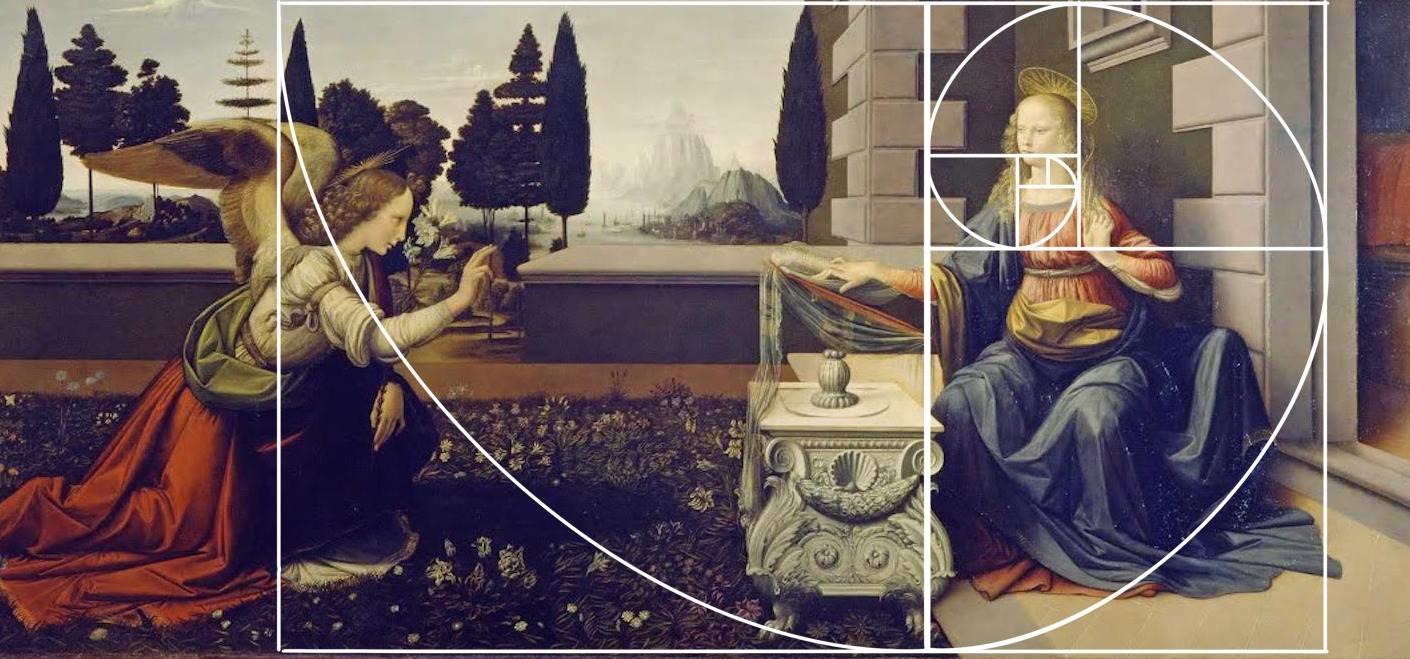
The golden ratio is an irrational number that approximately equals 1.618. For artistically-minded people, the ratio—or better yet, the divine proportion—might be easier to understand visually. This is easiest to demonstrate with the golden spiral, which is often depicted and constructed within a rectangular frame.
While the result is technically not a truly logarithmic, or “golden,” spiral, it is a close approximation. More importantly, this is the type of process artists have used to visualize and apply the divine proportion to their paintings throughout the centuries. Here are several examples of how the golden ratio can be applied to works from art history.
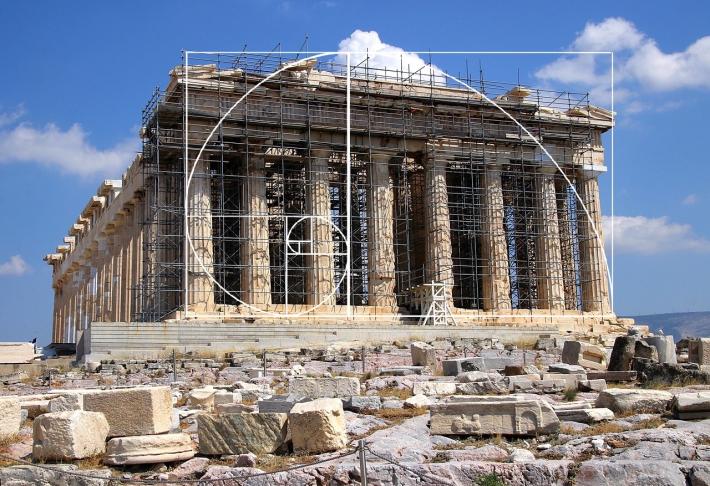
The Parthenon, c. 447 BC. Athens, Greece.
According to historians, the golden ratio was first studied by ancient Greek mathematicians. While some believe the Grecians did associate the ratio with aesthetics and even applied it to achieve beauty (many argue it was intentionally used in the Parthenon) there is little evidence to support this.
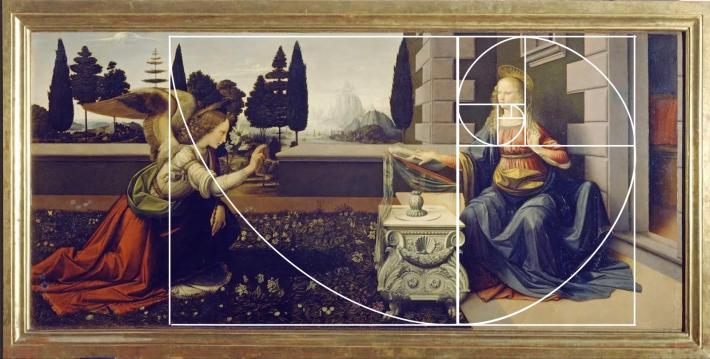
Leonardo da Vinci, Annunciation, c. 1472.
Widespread artistic interest in the ratio (within Western circles) can be justifiably associated with the publication of Divina proportione in 1509. The book, written by mathematician Luca Pacioli and illustrated by Leonardo da Vinci, was widely lauded for its clear writing and stunning illustrations. Many believe these qualities allowed it to reach and occupy artistic circles.
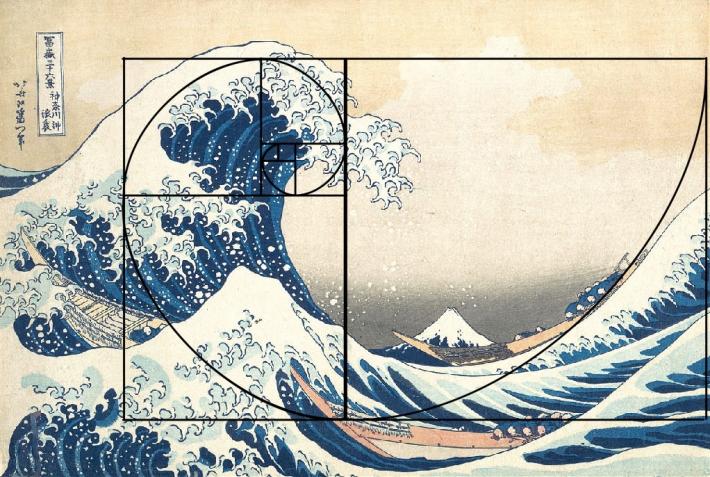
Katsushika Hokusai, Under the Wave off Kanagawa, also known as The Great Wave, from the series Thirty-six Views of Mount Fuji, 1831. Woodblock print; ink and color on paper.
It is important to note that the logarithmic spiral and the principles behind it are woven into nature and thus extend far past the reaches of the Greeks and Da Vinci. This nineteenth-century Japanese print depicts a wave—a naturally occurring spiral—and serves as a testament to the long non-Western tradition of seeking influence from nature and the beauty it intrinsically offers.
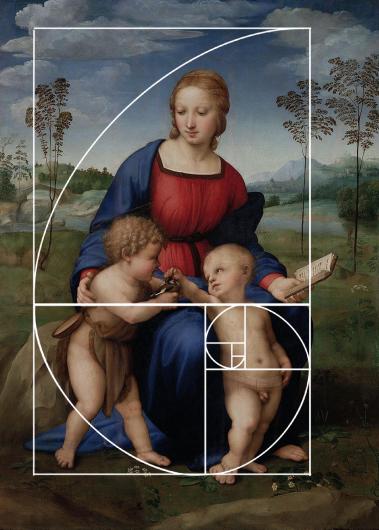
Raffaello Sanzio, Madonna of the Goldfinch, 1505 - 1506.
In Raffaello Sanzio’s Madonna of the Goldfinch, the principles of the golden ratio can be seen throughout the painting. The outer limits of the spiral follow Madonna’s upper-left side, the far leg of John the Baptist, and the feet of the Christ Child. These three arcs work together to lead the eye through the painting and the ratio as a whole gives the image a sense of balance and so-called divine proportion.
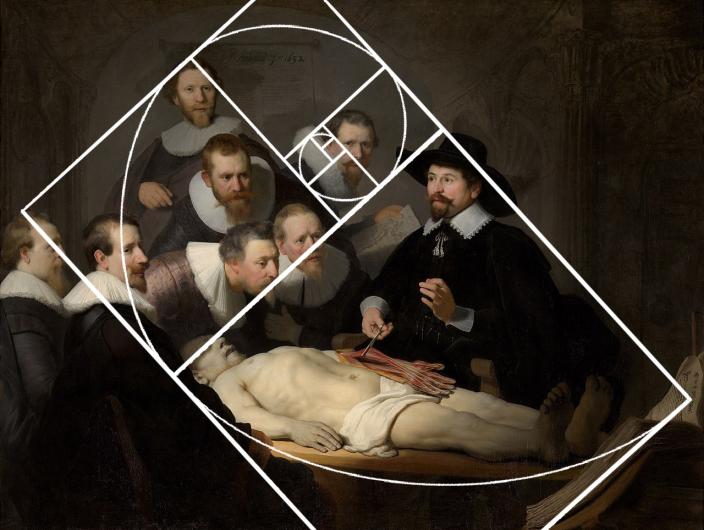
Rembrandt, The Anatomy Lesson of Dr. Nicolaes Tulp, 1632.
There is no doubt that the golden ratio runs rampant through the art of the sixteenth century and beyond. The most evident manifestation of the ratio lies in the composition of paintings and cutting of canvases. This Rembrandt painting is a particularly stunning example of the spiral’s manifestation as it is not only shown through a complex yet clear layout of figures and background. The compositional tool has also been used to enhance the story. For example, an unbreakable connection is created between the text in the lower right corner and the students.
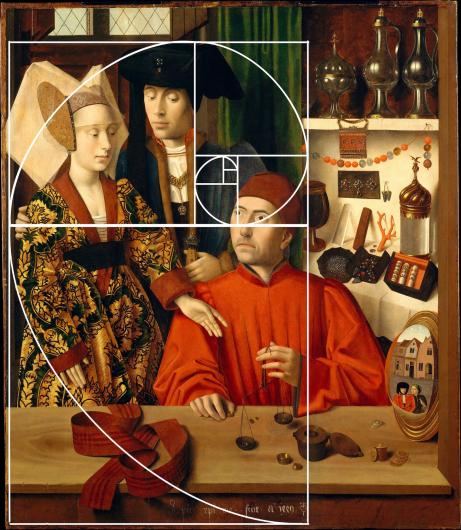
Petrus Christus, A Goldsmith in his Shop, 1449. Oil on oak panel.
This painting was created fifty years before the publication of Divina proportione and was painted by a Northern European artist. The art world of this region and time focused less on mathematical approaches such as one-point perspective and the golden proportion, favoring symbolism and moralistic undertones. And yet, the presence of a golden spiral here can not be denied.
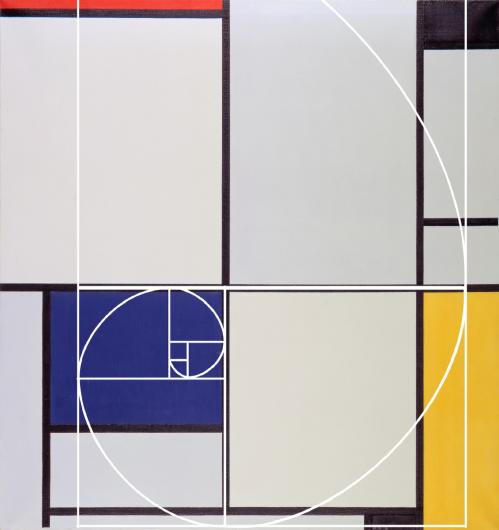
Piet Mondrian, Tableau 1, 1921.
Painter and art theoretician Piet Mondrian often wove the golden ratio into his work to an astonishing degree. Although the Modernist originally made figurative art, he pivoted to focus on abstract, geometric work and eventually became well-known for his rectangle-square compositions in particular. He is now considered one of the best and most important artists of the twentieth century.
Anna Claire Mauney
Anna Claire Mauney is the former managing editor for Art & Object. A writer and artist living in North Carolina, she is interested in illustration, the 18th-century, and viceregal South America. She is also the co-host of An Obsessive Nature, a podcast about writing and pop culture.![]()























